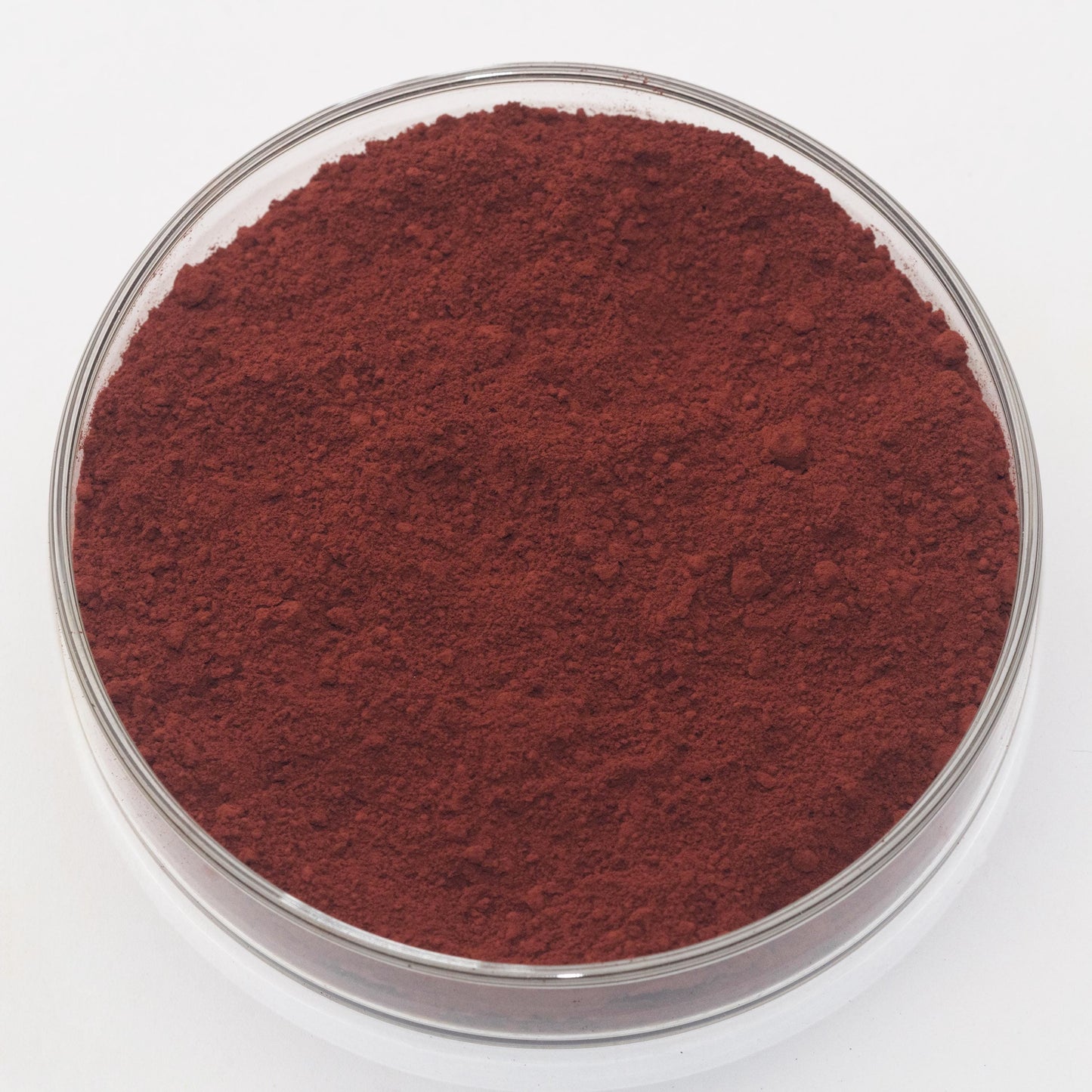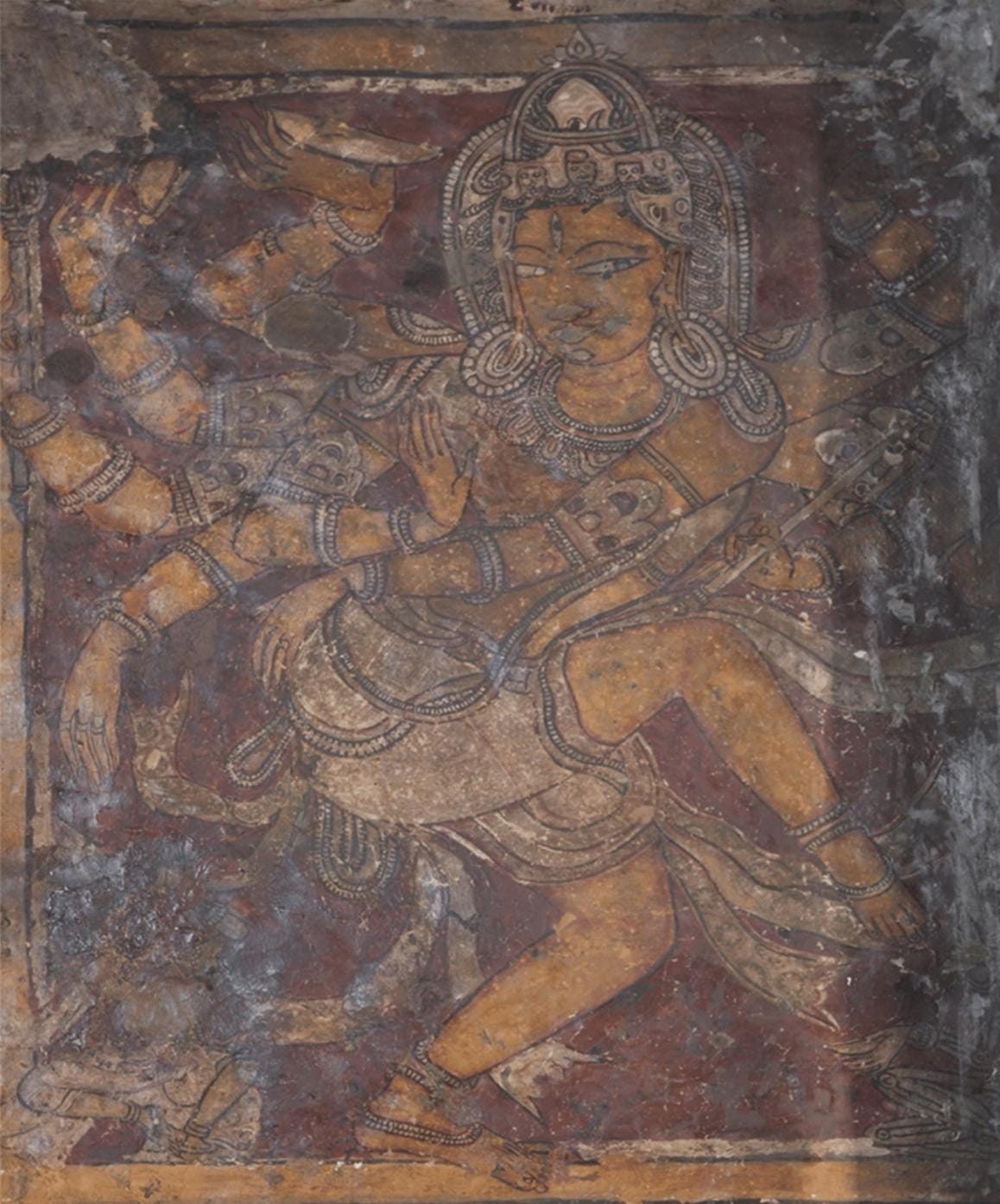Indian Red
Indian Red
Couldn't load pickup availability
Share



Description
Indian Red is a handmade single earth pigment made through a historical process of extraction, drying, and fine grinding. This pigment is rich in iron oxide, giving it a deep, warm red hue with subtle violet undertones. Its strong opacity and high tinting strength make it a powerful color in painting, ideal for creating dramatic shadows, earthy tones, and natural skin tones.
Indian Red has exceptional lightfastness, making it highly durable for both classical and contemporary artwork. It blends seamlessly with other earth pigments, offering warm and harmonious tones in painting. Its semi-opaque to opaque quality allows for beautiful layering and depth in oil, watercolor, and tempera applications. Compared to synthetic reds, it provides a more complex and organic color, ideal for landscape, portrait, and decorative painting.
History
Iron oxide-based red pigments have been used in painting since prehistoric times, with early cave paintings containing similar mineral compositions. Indian Red has long been valued for its permanence and warm, earthy tones.
During antiquity, Indian Red was widely used in Indian, Egyptian, Greek, and Roman wall paintings, frescoes, and ceramics. The pigment's rich, deep red hue made it a valuable component in murals and architectural decoration. In the pictured Mural from Nataraj, Kailashnath temple, Indian red mixed with vermilion is used for the rich reds throughout.
In the Renaissance, artists such as Titian and Rembrandt used Indian Red extensively for underpainting, glazing, and shading. It was favored for its ability to create warm skin tones, enhance shadows, and mix well with other earth pigments to achieve naturalistic effects.
By the 18th and 19th centuries, Indian Red had become a staple pigment in European painting traditions, particularly in portraiture, landscape painting, and classical realism. The pigment was also widely used in industrial applications, including textiles and architectural paints.
Today, Indian Red continues to be an essential pigment in fine art, conservation, and restoration due to its historical authenticity, warmth, and strong covering power.
Health and Safety
Precautions:
Keep out of reach of children and pets.
Do not consume.
Not for cosmetic or food usage.
Do not spray apply.
For further health information contact a poison control center.
Use care when handling dry pigments and avoid dust formation.
Use particular caution with fibrous, fine, or toxic pigments.
Do not eat, drink, or smoke near dry pigments.
Avoid breathing in pigment dust and use a NIOSH-certified dust respirator with sufficient rating for dry pigment.
Wash hands immediately after use or handling.
If dust is likely, always wear protective clothing to keep out of eyes, lungs, off skin, and out of any contact as well as keep area ventilated.
This product may contain chemicals known by the State of California to cause cancer, birth defects, or reproductive harm.
Warnings and bottle information are abbreviated.
Pigment Information
Pigment Type: Natural (Iron Oxide) from minerals (Hematite - Fe₂O₃) (India)
Suitable Mediums: Watercolor, Oil, Tempera, Acrylic
Lightfastness: Best
Opacity: Semi-opaque to opaque
Other Names: Persian Red, Light Red, Pompeian Red
Color Index Code: PR101
Image: Mural by Unknown from Nataraj, Kailashnath temple



